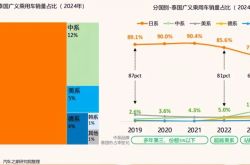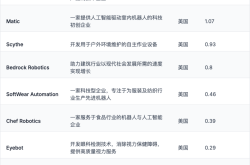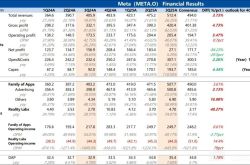9 Battlegrounds' Actual Combat Review: Have Agents Become Real Productivity Tools?
![]() 07/24 2025
07/24 2025
![]() 576
576
A good agent is not measured by the number of copies it generates or lines of code it writes, but by its ability to comprehend your current tasks. A mature agent is not just about handling numerous dialogues, but about collaborating with humans, integrating with systems, and bridging organizational silos. A true intelligent agent does not rely on superficial cleverness, but on trust earned through process-level judgment.
After 2025, AI agents will transcend being mere individual tools, evolving into intelligent units that foster collaboration.
Author | DouDou
Editor | PiYe
Produced by | Industrialist
As of February 2025, the number of generative AI users in China has surpassed 250 million, with AI fully integrated into various scenarios including office work, customer service, content creation, marketing, programming, and data analysis.
AI agents have emerged as the most controversial yet highly anticipated protagonists in this evolution.
These agents are transcending the role of mere tools, evolving into collaborators. In certain scenarios, they can independently complete tasks, while in others, they participate in decision-making processes and ensure delivery.
This article delves into nine key battlegrounds, attempting to answer: What constitutes a truly effective agent?

I. Office Assistant Agents:
The catalyst for efficiency leap and testing ground for intelligent collaboration
Among all enterprise scenarios, the office is where intelligent agents have made the fastest inroads.
Meeting minutes, daily report writing, PPT generation, task circulation—these repetitive yet crucial tasks have become prime candidates for AI takeover. Consequently, office agents were among the first intelligent agent categories to successfully complete a closed loop in 2025.
From Feishu, DingTalk, to WPS, Tiangong, and MasterAgent from the USTC team, numerous products now listen to you, assist in writing, and submit tasks on your behalf.

The Tiangong Super Intelligent Agent employs a structure of "5 expert agents + 1 master control agent," enabling one-time PPT and financial report generation. Feishu MyAI is embedded in systems like documents, calendars, and Jira, automatically identifying pending tasks and pushing them to executors. WPS AI Agent primarily targets the enterprise version, widely used in contract clause revisions and meeting minutes scenarios.
However, most of these agents only act upon command. They can summarize and rewrite, but they still cannot prioritize your tasks.
For instance, for the same meeting minutes, it can swiftly produce a summary but cannot remind you which tasks are more urgent, which boss is awaiting feedback, or which documents should be archived.
This lack of perception of the main task line is the biggest bottleneck faced by office agents.
A significant development in 2025 is the advent of proactive agents.
Platforms like Feishu, DingTalk, and MasterAgent are developing global task mapping capabilities, enabling agents to go beyond being reactive tools to scheduling, reminding, and following up across multiple systems. For example, USTC's MasterAgent has been piloted in central enterprises, using a multi-agent system to reduce cross-departmental approval cycles from 15 days to 48 hours.
Yet, such proactive abilities are often constrained by permission architectures, system fragmentation, and organizational habits. Especially in large organizations with thousands of employees, for agents to become smarter, they must understand who is responsible for what and who should act first—a challenge that spans both technical and organizational semantics.
Currently, office agents are the most mature among the nine scenarios, boasting a clear profit model (primarily SaaS value-added services) and high user acceptance. However, to evolve from efficiency tools to intelligent collaborators, they still need to overcome the hurdle of understanding organizational context and task logic.
A truly effective office agent should not only listen and write but should anticipate your needs before you speak.
II. Customer Service Agents:
Able to take calls, but more importantly, able to resolve issues
Customer service is one of the scenarios where AI agents have made the fastest inroads and yielded the most direct returns.
It naturally meets three criteria: high repetition rate, clear standard processes, and manageable error costs. From e-commerce to finance and government hotlines, more and more conversations are handled not by humans but by agents.
For example, Baidu Intelligent Cloud Keyue supports TTS voice customization for agents, enabling them to replicate the voices of top salespeople and automatically distribute work orders while synchronizing CRM records. Zhichi Customer Service AI focuses on emotion recognition and "human + AI" hybrid staffing, with an interception accuracy rate exceeding 90% for high-risk customers. Xiaoi Customer Service Cloud holds the highest market share in the financial industry, boasting a risk control Q&A accuracy rate of 98.5%.

The basic capabilities of these products are clear: they can listen, answer, and summarize. However, the issue lies in their ability to handle matters beyond just taking calls.
The current core challenge for customer service agents is process closure. If a user expresses a desire to return an item, AI can identify the intent, but without connectivity to the order system, points system, and refund permissions, it can only assist in transferring the call to a human agent. This is not a comprehension issue but a lack of business accessibility.
Take Zhuiyi Technology's AskBot as an example; it has deployed dynamic return policy agents on multiple e-commerce platforms, capable of real-time decisions on issuing coupons or automatic refunds based on customer profiles, helping merchants reduce customer complaint rates by 40%. In contrast, agents that can only say "I understand your dissatisfaction" are quickly hung up on by users.
However, in 2025, emotion recognition and "local deployment" are becoming new standards.
As customers' tolerance for the quality of AI responses decreases, brands are demanding that agents not only respond swiftly but also correctly and appropriately. For instance, Zhichi already supports high-frequency words to trigger "human intervention" to avoid AI emotional overstepping. Natterbox AI Agents promote speech synchronization summaries + work order rewriting solutions among overseas enterprises to tackle multi-language + cross-timezone customer service challenges. Baidu Intelligent Cloud Keyue can intelligently integrate global communication paths, precisely responding to user needs and enhancing service efficiency throughout the journey.
But for these agents to truly "resolve issues," they still need to integrate with backend process systems.
In summary, customer service agents need to evolve from "being able to talk" to "being able to solve problems," not only understanding the user's intent but also being able to "take action" on behalf of the enterprise.
III. Marketing Agents:
Writing copy is not difficult, what's difficult is understanding "people"
In the realm of advertising and growth, AI seems to be taking on more roles—automatically generating copy, designing graphics, editing videos, running ad placements, measuring ROI, and even assisting with user segmentation and landing page setup.
However, after consulting with several marketing teams, almost everyone echoed the same sentiment: "It works fast, but not necessarily accurately."

The logic behind marketing agents sounds appealing. You provide a demand, such as "promote a new essence for women born after 1995," and it can churn out 30 titles of different styles, generate graphic materials, and even run AB tests based on click-through rates to automatically optimize ad placement strategies.
For example, Alimama Wanxiang AI can already complete the "product analysis - graphic generation - landing page matching" link, improving ad placement ROI by up to 20% in some categories. Shenyan Intelligence's "Pince AI" directly integrates user insights, script generation, and multi-platform publishing into a one-stop platform. Salesforce AI-Agentforce 2.0 focuses on overseas customers, with some foreign trade customers reporting a three-fold increase in ROI.
The problem lies in: these agents understand how to promote but not why.
They can provide dozens of copies but cannot discern which one truly resonates with the brand tone. They can help generate a graphic but do not comprehend why users clicked on that content in the first place.
This is the biggest shortcoming currently faced by marketing agents—a lack of understanding of "context" and "crowd psychology".
One brand told Industrialist, "AI often produces scripts that are rational and focused on functional points, which completely misalign with our brand's emotional tone and fail to hit the mark."
More complexly, the marketing link that harmonizes brand and effectiveness is inherently unsuitable for being handled by a single agent. From planning to conversion, it traverses user psychology, trending topic rhythms, and platform mechanisms, and most existing systems still have multiple agents each managing a segment, with a true closed loop still far from being realized.
Some new changes have emerged in 2025, with strategy-level agents starting to test the waters.
Some vendors are attempting to shift agents from execution-oriented to recommendation-oriented, enabling them to suggest, "For this new product, I recommend creating a set of videos with a sense of contrast + city-related topics." But this capability is still in the pilot stage for leading companies, and the vast majority of agents are still at the content execution level.
Therefore, the current maturity of marketing agents is not high, with business models primarily consisting of "advertising revenue sharing + tool subscriptions," characterized by fast inroads but unstable hit rates. The main sticking point remains insufficient brand context modeling and strategic understanding.
IV. Content Creation Agents:
Able to edit, match, and broadcast, but still unable to write a "twist"
The most noticeable change in the content industry over the past two years is the explosion of production capacity and the scarcity of creativity. AI agents have condensed work that once required an entire editorial team into a process that can be managed by one person + one model.
When a user provides a topic like "an introverted girl's corporate comeback," the content agent can help outline, write scripts, add subtitles, generate voiceovers, edit videos, and even recommend thumbnails and publication times.

Such tools have become standard equipment in short dramas, self-media, and MCN agencies.
For example, ByteDance's Jianxiaoying focuses on one-click operation, where users only need to upload pictures and videos, and the application automatically edits them, providing a variety of filter templates and music options. Beidou Zhiying's Qixing Agent targets the short drama overseas market, supporting script rewriting, multilingual translation, and storyboard generation, renowned as the leader in the content assembly line. Tencent Zhiying and Baidu ERNIE-Vigan specialize in film-level editing and graphic content replication, respectively, serving users across multiple verticals such as MCN, marketing, and education.
It seems like content agents can do it all.
But the problem is also evident: they can produce "what content," but they cannot yet discern "good content".
The head of a short video team once described their experience using an AI script assistant like this: "The structure is clear, the style is consistent, and the rhythm is stable, but all the plots have a sense of predictability where 'you know what will happen next'."
In other words, what it lacks is a twist, emotion, and expectation-breaking moments.
This is precisely the bottleneck faced by content agents. They excel at induction, but creativity often stems from crossing boundaries. They can summarize the patterns of past hits but cannot predict what will be popular next.
A key development in 2025 is the emergence of creative assistant agents.
Some products are beginning to experiment with "topic suggestions + rhythm optimization + emotional structure analysis." For example, Zhipu Qingyan Content Factory has packaged long text automatic generation and compliance detection for use in government and media content departments. Some AI short video platforms are also attempting to make agents not just editors but to suggest where to insert suspense in videos and which lines may trigger comments.
However, these functions are still in the exploratory stage.
Overall, the maturity of content creation agents is not as high as that of marketing scenarios, with business models primarily consisting of "SaaS subscriptions + platform services." The advantage lies in boosting production capacity and lowering thresholds, but creative polishing still necessitates human intervention.
V. Programming Agents:
Writing code is not rare, being able to "follow projects" is reliable
The fact that AI can write code is no longer news.
Tools like GitHub Copilot, Tongyi Lingma, and CodeGeeX have long been integrated into developers' IDEs. But when programming agents shift from "complementing a function for me" to "helping me complete the entire requirement," the dynamics become more intricate.
Writing code is a dynamic process of team collaboration, where requirements evolve, interfaces are modified, naming conventions are not standardized, and documentation is often outdated. For an agent to be truly useful, it cannot just manage a segment of code; it needs to comprehend the project's recent activities.
In 2025, more and more development teams are beginning to test project-level agents.
Among the myriad solutions, two stand out prominently in terms of reputation: trde and Cursor.
trde (Tri-Developer Environment) specializes in collaboration on medium to large-scale projects, emphasizing the seamless integration of the "write-test-debug-deploy" process. It generates reusable templates based on historical commit records and CI status, supports the automatic creation of unit tests, marks function intentions, identifies potential conflicts, and even warns about dependency changes prior to deployment.
Cursor, built on VS Code, focuses on deep context tracking. It not only completes code based on natural language but also automatically identifies PR modifications, traces function call chains, tracks module variable references, and detects recently refactored logics, enabling AI to genuinely participate in the project's evolution.
In contrast, while tools like Cosy Agent, CoDesign, and CodeArts Snap can complement code and generate tests, they exhibit significant cognitive limitations. They understand what you wrote but not for whom, where, or why you wrote it.
For instance, if asked to change a variable, they make the alteration but fail to提醒 you that the variable is referenced in another module. When asked to complete an interface, they write the documentation but may be unaware that part of it was recently refactored. The lack of contextual awareness is the primary blind spot faced by most programming agents today.
This is why leading products are embracing the fusion of "code + tasks + project status," ensuring not only high-quality code but also adaptability to changes, understanding of collaboration rhythms, and awareness of team status.
Currently, programming agents primarily generate revenue through IDE plugin subscriptions and API licensing, with early adopters mostly comprising independent developers and front-end teams. The greatest challenge lies in enhancing project-level contextual awareness.
In summary, a truly useful programming agent is not merely a smarter keyboard but a partner that helps you "understand what the project is currently doing."

VI. Data Analysis Agent:
It responds swiftly, but caution is advised before believing it.
"Help me check if orders in Hangzhou declined last week?"
This is a daily query posed by many business professionals to the data department.

Now, with the Data Analysis Agent, there's no need to wait for data. Simply type your query, and it instantly generates charts, compares trends, and even provides a summary like "Overall decline due to a 7.5% drop in conversion rate."
But is it truly reliable?
Most current BI Agents translate natural language requests into SQL, pull data to create charts, and offer simple explanations. Volcano Engine's Data Agent is a prime example, using a Plan+React dual-engine structure to automatically identify intent, construct queries, and generate summaries, replacing junior analysts in generating daily/weekly reports for some fast-moving consumer goods companies. Sensors Data Copilot, Yonghong BI Assistant, and others focus on vertical functions such as user path analysis, indicator tracing, and device anomaly detection.
The benefits are clear: data retrieval no longer relies on manual effort, and data truly reaches the front lines of business.
However, the issue is also evident: it responds quickly but verifying its accuracy is challenging.
Many BI Agents fail to grasp the intent behind your questions. For example, when asked about conversion rate changes, they might default to calculating from UV to order placement. Mentioning user churn might prompt them to pull data on users who haven't logged in for 7 days, while you're actually interested in unsubscribed users. This type of literal correctness with semantic errors is common.
An operations director told Industry Home: "The Agent can generate charts, but I often need to monitor which tables and indicators it's pulling from, as slight inattention can lead to errors."
Ultimately, BI Agents lack not computing power but "indicator semantic awareness" and "business context".
However, this year, the development of the indicator semantic layer is accelerating.
Guanyuan Intelligence Agent has established a unified indicator space in the retail industry, binding conversion rate and repurchase rate with precise definitions, ensuring that the Agent's analysis is tailored. SmartBI Agent, Datastory Social AI, and others attempt to integrate data permissions, indicator definitions, and departmental roles into a single prompting engine to make answers more controllable.
VII. Finance, Tax, and Legal Agent:
It can identify invoices and clauses but hesitates to make decisions for you.
Among all intelligent agent scenarios, finance, tax, and legal may be the least glamorous but most sensitive areas.
There's no shortage of repetitive tasks here: contract review, invoice verification, tax declaration, and regulation comparison are all templated. However, there's no room for fuzzy intelligence. A misreviewed clause or over-recognized tax point can lead to audits, fines, and even legal disputes.
This forces Agents to go online but also requires them to work cautiously.
Unlike writing daily reports or editing videos, these Agents must first earn trust and permission before deployment. Therefore, they initially enter low-risk, rule-heavy mechanical scenarios rather than judgment processes.

For example, Inspur's Haiyue Expense Reporting Agent is embedded with over 100,000 financial rules. In a pilot program with a large state-owned enterprise, the entire reimbursement process achieved zero human intervention, reducing compliance risks by 95%. Yonyou's Intelligent Tax Agent automatically adjusts declaration scopes based on new tax bureau regulations, covering all tax categories and synchronizing declaration rhythms in real-time. Kingdee's "Qianglong Contract Agent" is used by multiple large law firms, with its core capability being extracting key risk clauses from contracts and comparing them with "suggested modifications for reference".
On the surface, they resemble a standard "AI document processor." However, in practical implementation, the challenges far exceed the technology.
For instance, an Agent can identify that an "arbitration clause" in a contract is unreasonable and provide an industry standard example. However, it doesn't know if the company's CEO is willing to compromise, if this client is worth conceding to, or if this agreement involves larger strategic arrangements. What legal personnel truly need is to weigh risks, organize internal negotiations, and make judgments from the company's perspective, which Agents currently cannot intervene in.
Another example is tax processing. An Agent can verify invoice headers, reimbursement amounts, and duplicate records, but whether this invoice should be reimbursed often involves more than just spreadsheet accuracy. It involves a chain of human operations such as internal budget systems, project ownership, and process backfills. AI can detect anomalies but doesn't know if you want to overlook them.
The key variable in 2025 is that more enterprises are starting to explore turning Agents from "document scanners" into "rule enforcers".
In other words, they no longer merely identify problems but can also provide preliminary decision-making suggestions based on preset enterprise rules and sync them into the approval process.
For example, eSignBao's Compliance Agent offers automatic compliance judgment + interception suggestions for advertising copy. Fadada's Contract Lock Agent has begun introducing a case comparison recommendation system, providing the litigation department with similar precedents + optimal response path combinations.
In terms of maturity, Finance, Tax, and Legal Agents are not highly developed, with high deployment thresholds and long iteration cycles. Currently, they are mostly deployed privately or customized for major clients. The bottleneck lies not in the model but in organizational trust mechanisms, standardization of rule systems, and design of responsibility attribution.
VIII. Industry-Specific Agents:
AI aims to enter workshops, hospitals, and ports but must first become an "insider".
Among all intelligent agent tracks, industry-specific Agents are the most difficult to "standardize" but also the most imaginative.
Unlike office assistants or customer service bots, these Agents cannot be universally applied but must be deeply integrated with specific business processes, system interfaces, and professional knowledge bases.
Therefore, these Agents are rarely off-the-shelf and are more often cultivated by enterprises themselves.

For example, in manufacturing, Midea's Industrial Agent has been deployed in its own factories, achieving multi-task collaboration for production line quality inspection, scheduling, and equipment fault prediction by connecting to the MES system, SCADA system, and ERP.
In healthcare, USTC's MasterAgent Healthcare Version has been piloted in multiple top-tier hospitals, capable of summarizing, quality controlling, and triage suggesting for inpatient medical records, as well as recommending similar disease types based on historical treatment plans.
Logically, the key to the success of these Agents is not the size of the model but the existence of a data loop. It must not only connect to the business but also receive feedback. This allows it to know if the operation was successful, if the model's judgment was adopted, and what consequences misjudgments brought. Once this loop is established, the Agent's self-optimization capabilities can truly be unleashed.
The new change in 2025 is that the ability for software and hardware collaboration has become a new threshold.
Some enterprises have begun to connect Agents with IoT, edge nodes, image capture, and wearable devices to achieve AI on-site collaboration that is "visible + articulate + actionable".
For example: Cainiao's Supply Chain Agent optimizes warehouse and distribution paths, with a cost traceability mechanism for each arrangement. XAG's Agricultural Agent identifies pests based on satellite imagery, automatically generates pesticide application plans, and dispatches drones. Unisound's Industrial AR Agent has been applied in some power enterprises, assisting maintenance personnel with command guidance and recognition feedback through AR glasses, with a response time of less than 3 seconds.
The maturity of this type of Agent depends entirely on industry depth and enterprise digitization foundations. Currently, it is still primarily delivered through project-based delivery + local deployment, making rapid scaling difficult.
IX. Multi-Modal Interaction Agents:
Looking human doesn't equate to being truly "usable".
When AI has a face, voice, and expressions, and can even blink, chat, and tell stories, our expectations of it evolve. We expect it not just to do things but to act like a human.
These Agents are called "Multi-Modal Interaction Agents," integrating language models, speech synthesis, motion generation, TTS, and virtual avatars. They are currently the batch of intelligent agents closest to anthropomorphism.
However, because of this, they are often the most eye-catching but the hardest to implement.

In the pan-entertainment field, many vendors are trying to turn AI into virtual friends. Doubao AI has launched an "AI Partner" that can set personality traits, conversation styles, and long-term memory functions. Overseas products like Character.AI and Glow allow users to customize anime characters, celebrity avatars, and even build virtual emotional relationships.
But many users share similar feedback: these "AI friends" are impressive at first, but prolonged conversations reveal that their words are too scripted, too prone to emotional oversteps, and too prone to contradictions.
The reason is that they can generate expressions but haven't yet established emotional logic. In other words, there are still several key technological steps between looking like a human and thinking like a human, such as long-term memory, emotion regulation, behavioral consistency, and a core value system.
However, the real opportunity for Multi-Modal Agents to thrive lies in the B-end.
For example, Yingpu Technology's virtual anchor matrix deployed on multiple platforms supports 7x24-hour live streaming, explaining products, answering comments, and automatically generating voiceover scripts. Baidu Lingjing's virtual customer service training system has been implemented in the telecommunications and financial industries, using motion capture + voice feedback to simulate real-world scenarios and accelerate the onboarding of internal staff. iFLYTEK's "Spark" medical assistant is piloting the anthropomorphic explanation of imaging, allowing doctors to view CT scans while listening to the Agent automatically explain lesion changes in a natural tone.
In these scenarios, virtual humans don't need to be as engaging as friends; they just need to be stable, punctual, and error-free.
The key variable in 2025 is whether virtual Agents can transition from "visual attraction" to "real work." The current evaluation criteria are no longer whether they look like real humans but whether they can complete tasks.
In terms of maturity, Multi-Modal Agents are currently not highly developed overall, and widespread implementation will take more than a year. However, those focusing on vertical roles, such as shopping guides, tour guides, customer service distributors, and medical broadcast assistants, are being introduced into frontline scenarios at an astonishing speed.
Written at the end:
From office assistants that seamlessly generate daily reports to precisely targeted marketing partners, and from creative collaborators who batch edit videos to virtual colleagues adept at diagnosing, manufacturing drugs, and broadcasting, we have witnessed AI Agents emerging like wildfire across various domains over the past year.
These Agents manifest in diverse forms: some resemble tools, others colleagues, and still others, friends. However, upon reflection, the genuine impetus behind this surge of Agent development is not merely the enhancement of specific model parameters or the accumulation of breakthroughs in isolated scenarios. Rather, it stems from a more profound shift: enterprises are embracing AI as an integral part of their processes, rather than a mere external add-on.
This signifies that a valuable Agent is not measured by the number of copywriting or coding tasks it completes, but by its ability to comprehend our current endeavors. A mature Agent is not about engaging in multi-round conversations, but about transcending organizational boundaries, collaborating seamlessly with humans, and integrating with existing systems. A truly intelligent agent relies not on superficial cleverness, but on the trust engendered by process-level judgment.
Post-2025, AI Agents will transcend their role as mere tools, evolving into intelligent units that foster collaborative capabilities.
They will cease to exist in isolation and will progressively become indispensable nodes within an enterprise's task chain, a consumer's decision-making journey, and an organization's workflow.
The competition among Agents is ultimately a battle for collaborative prowess. The entity that first establishes a closed-loop system encompassing "perception, judgment, execution, and feedback" will truly unlock the potential of intelligent agents.








